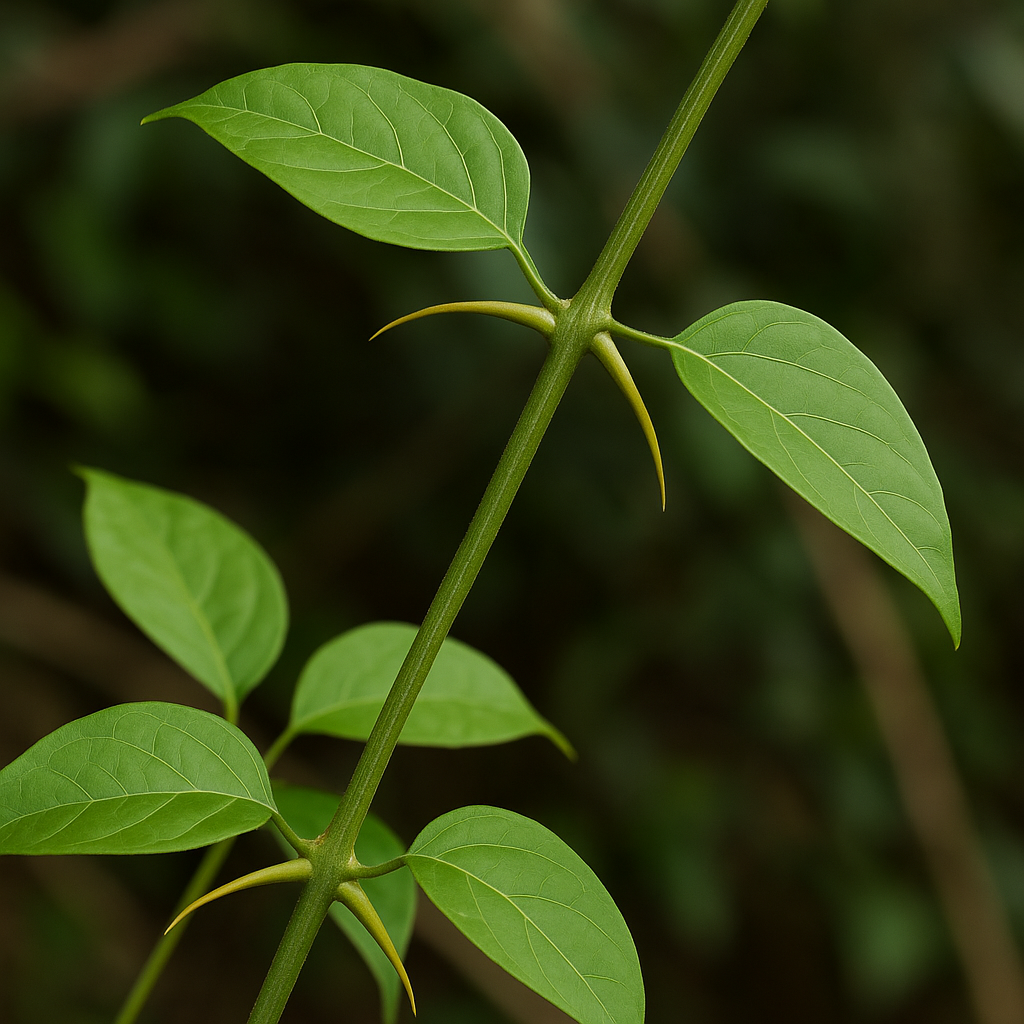Cat’s claw (Uncaria tomentosa) is a medicinal vine native to the Amazon rainforest and other tropical regions of South America, especially Peru and Brazil. Its popular name comes from its hook-like thorns that resemble a cat’s claw. This climbing plant has gained recognition in traditional medicine for its anti-inflammatory, immune-boosting, and antioxidant properties, and is widely used as a natural treatment for various health conditions.
Over the years, cat’s claw has become the subject of numerous scientific studies that support its therapeutic potential. The bark and roots of the plant are rich in bioactive compounds such as oxindole alkaloids, tannins, and flavonoids, which are responsible for its health benefits. It is commonly consumed in the form of capsules, teas, or extracts and is popular among those who use herbal medicine and integrative health approaches.
Medicinal properties of cat’s claw
One of the most important uses of cat’s claw is in strengthening the immune system. The oxindole alkaloids found in the plant help regulate the immune response, making the body more resistant to viral, bacterial, and fungal infections. This makes it a powerful ally in preventing and managing common colds, flu, and recurring infections.
Cat’s claw is also known for its potent anti-inflammatory action. For this reason, it is often recommended as a complementary treatment for chronic inflammatory diseases such as rheumatoid arthritis, osteoarthritis, lupus, and inflammatory bowel diseases like Crohn’s disease and colitis. The plant’s compounds help reduce swelling, pain, and joint stiffness, offering relief without the side effects commonly associated with synthetic anti-inflammatories.
Another important benefit is its antioxidant activity. Cat’s claw fights free radicals, which are responsible for premature cellular aging and DNA damage. Because of this, it is used in preventive protocols for degenerative conditions such as cancer, Alzheimer’s disease, and cardiovascular problems.
How to safely use cat’s claw
Cat’s claw can be used in different forms depending on the therapeutic goal. The traditional method is preparing a tea by infusing the bark in hot water. However, concentrated extracts, tinctures, and capsules are widely available in health stores and natural pharmacies.
Recommended doses vary, but most health professionals suggest using cat’s claw in cycles with breaks in between. This is because prolonged, continuous use may overstimulate the immune system, especially in individuals with autoimmune diseases. Therefore, medical supervision is crucial.
Pregnant and breastfeeding women, people with low blood pressure, or those taking blood thinners should avoid using the plant unless guided by a healthcare provider. Even though it’s natural, cat’s claw can cause side effects or interact with medications if used improperly.
Cat’s claw in traditional and modern medicine
In the traditional medicine of indigenous peoples and river communities in the Amazon, cat’s claw has always played a vital role as a “forest remedy” for a wide range of ailments. It was used not only for pain and inflammation but also for wounds, digestive problems, fevers, and as a blood purifier.
With the advancement of modern science, many of these traditional uses have been studied in labs. Research at universities in Peru, Brazil, and Europe has identified the active ingredients and tested them in cell cultures, animals, and in some clinical trials. These studies support the plant’s pharmacological potential, especially as a supportive treatment for immune and inflammatory disorders.
Potential role in cancer and viral infections
There are studies exploring the use of cat’s claw as a supportive therapy in cancer treatments, particularly due to its antioxidant effects and ability to protect cellular DNA. Some patients undergoing chemotherapy have used it to reduce side effects and strengthen their immunity.
Additionally, early-stage research has examined its effects against viruses such as herpes and even HIV. Although more evidence is needed to confirm its efficacy, these findings suggest that cat’s claw may have a promising future in herbal medicine and integrative therapies.
Choose reliable sources
If you’re considering using cat’s claw, make sure to buy it from reputable sources. The product should be traceable and verified as Uncaria tomentosa. There are other vines with similar common names that do not share the same medicinal benefits.
Look for products certified by health authorities and avoid buying in bulk from unreliable or uncertified vendors. Poor-quality or adulterated cat’s claw may be contaminated or mixed with other plants.
Conclusion
Cat’s claw is a powerful medicinal plant with a rich history of traditional use and growing scientific support. Its anti-inflammatory, immune-modulating, and antioxidant effects make it a valuable tool for treating both everyday and complex health issues. However, like all herbal remedies, it should be used responsibly, under professional guidance, and with proper respect for its potency.
If you’re looking for a natural way to boost your health, cat’s claw may be an excellent addition to your wellness routine. But remember—natural doesn’t mean risk-free. Knowledge, guidance, and moderation are key to its effective use.

Complementary Tip: Strengthen your toenails and skin naturally
Tea Tree Oil for Toenails – 100% Pure Tea Tree Essential Oil for skin, foot care, piercings, dandruff, hair, and scalp. A natural remedy for discolored or damaged nails, perfect for your daily self-care routine. Ideal for those looking for a clean, plant-based solution for nail and skin health.
Check it out now on Amazon and experience the benefits of this essential oil!
Discover the Beauty and Strength of Clusia
Looking for a low-maintenance yet stunning plant for your home or office? Clusia might be the perfect choice. Explore its versatility, care tips, and why it thrives both indoors and out.

